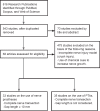Bridging larger gaps in peripheral nerves using neural prosthetics and physical therapeutic agents
- PMID: 30804232
- PMCID: PMC6425823
- DOI: 10.4103/1673-5374.251186
Bridging larger gaps in peripheral nerves using neural prosthetics and physical therapeutic agents
Abstract
Peripheral nerve injuries are relatively common and can be caused by a variety of traumatic events such as motor vehicle accidents. They can lead to long-term disability, pain, and financial burden, and contribute to poor quality of life. In this review, we systematically analyze the contemporary literature on peripheral nerve gap management using nerve prostheses in conjunction with physical therapeutic agents. The use of nerve prostheses to assist nerve regeneration across large gaps (> 30 mm) has revolutionized neural surgery. The materials used for nerve prostheses have been greatly refined, making them suitable for repairing large nerve gaps. However, research on peripheral nerve gap management using nerve prostheses reports inconsistent functional outcomes, especially when prostheses are integrated with physical therapeutic agents, and thus warrants careful investigation. This review explores the effectiveness of nerve prostheses for bridging large nerve gaps and then addresses their use in combination with physical therapeutic agents.
Keywords: axonal growth; electric stimulation; nerve conduits; nerve gap; nerve prosthesis; nerve regeneration; nerve repair; physical therapeutic agents.
Conflict of interest statement
None
Figures



Similar articles
-
Collagen nerve conduits--assessment of biocompatibility and axonal regeneration.Biomed Mater Eng. 2005;15(1-2):3-12. Biomed Mater Eng. 2005. PMID: 15623925
-
Electrical stimulation accelerates axonal and functional peripheral nerve regeneration across long gaps.J Neurotrauma. 2011 Apr;28(4):661-74. doi: 10.1089/neu.2010.1637. Epub 2011 Mar 24. J Neurotrauma. 2011. PMID: 21265597
-
Regeneration and repair of peripheral nerves with different biomaterials: review.Microsurgery. 2010 Oct;30(7):574-88. doi: 10.1002/micr.20799. Microsurgery. 2010. PMID: 20878689 Review.
-
A polymer foam conduit seeded with Schwann cells promotes guided peripheral nerve regeneration.Tissue Eng. 2000 Apr;6(2):119-27. doi: 10.1089/107632700320748. Tissue Eng. 2000. PMID: 10941207
-
Repairing injured peripheral nerves: Bridging the gap.Prog Neurobiol. 2010 Nov;92(3):245-76. doi: 10.1016/j.pneurobio.2010.10.002. Epub 2010 Oct 13. Prog Neurobiol. 2010. PMID: 20950667 Review.
Cited by
-
Design and fabrication of a nerve-stretching device for in vivo mechanotransduction of peripheral nerve fibers.HardwareX. 2020 Feb 7;7:e00093. doi: 10.1016/j.ohx.2020.e00093. eCollection 2020 Apr. HardwareX. 2020. PMID: 35495205 Free PMC article.
-
Temporal changes in the spinal cord transcriptome after peripheral nerve injury.Neural Regen Res. 2020 Jul;15(7):1360-1367. doi: 10.4103/1673-5374.272618. Neural Regen Res. 2020. PMID: 31960825 Free PMC article.
-
Negative Pressure Neurogenesis: A Novel Approach to Accelerate Nerve Regeneration after Complete Peripheral Nerve Transection.Plast Reconstr Surg Glob Open. 2021 May 13;9(5):e3568. doi: 10.1097/GOX.0000000000003568. eCollection 2021 May. Plast Reconstr Surg Glob Open. 2021. PMID: 34881144 Free PMC article.
References
-
- Ahlborn P, Schachner M, Irintchev A. One hour electrical stimulation accelerates functional recovery after femoral nerve repair. Exp Neurol. 2007;208:137–144. - PubMed
-
- Aldini NN, Perego G, Cella GD, Maltarello MC, Fini M, Rocca M, Giardino R. Effectiveness of a bioabsorbable conduit in the repair of peripheral nerves. Biomaterials. 1996;17:959–962. - PubMed
-
- Anders JJ, Moges H, Wu X, Erbele ID, Alberico SL, Saidu EK, Smith JT, Pryor BA. In vitro and in vivo optimization of infrared laser treatment for injured peripheral nerves. Lasers Surg Med. 2014;46:34–45. - PubMed
LinkOut - more resources
Full Text Sources
Molecular Biology Databases
Miscellaneous

